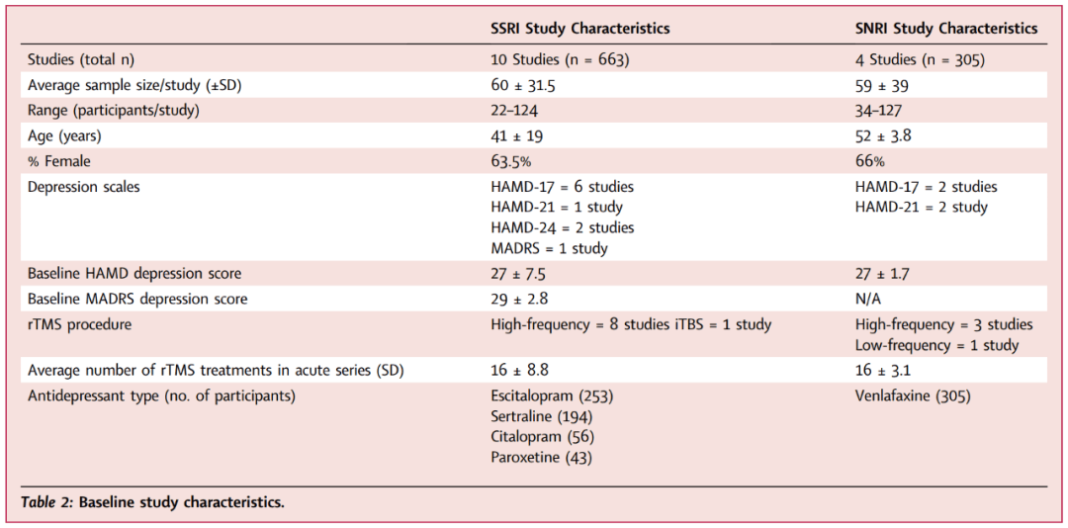Introduction
This study is the first meta-analysis evaluating the impact of antidepressant categories on the efficacy of repetitive transcranial magnetic stimulation (rTMS) combined with medication in treating depression.
The results indicate that the efficacy of SSRI combined with rTMS (symptom improvement extent, effectiveness rate, clinical cure rate) is significantly better than using SSRI alone, while the efficacy of SNRI combined with rTMS shows no significant difference compared to using SNRI alone. The authors propose that this outcome may be attributed to the stronger neuroplasticity effect of SSRI compared to SNRI.
When initiating rTMS therapy, SSRIs such as escitalopram and sertraline may be more ideal partners compared to SNRIs. Additionally, as the analysis suggests that the duration of treatment and dosage do not affect clinical outcomes, shortening the rTMS treatment duration and reducing the SSRI dosage could potentially balance efficacy and tolerability.
Repetitive Transcranial Magnetic Stimulation (rTMS) is a non-invasive brain stimulation therapy that exerts its effects by inducing changes in specific neural networks related to emotions, cognition, and behavior. When used alone to treat depression, rTMS has a high relapse rate, and the effectiveness varies greatly among different treatment plans; in clinical practice, rTMS is often used in conjunction with antidepressants as an adjunctive treatment for depression.
However, considering the differences in the mechanisms of existing antidepressants, which combination of antidepressants is significantly more effective when combined with rTMS therapy at the initiation stage has not been explored in any previous meta-analysis.
Study Overview
In a recent systematic review and meta-analysis published in eClinicalMedicine, a journal under The Lancet with an impact factor of 9.6, researchers including Alina Zaidi from Sunnybrook Research Institute at the University of Toronto evaluated the efficacy and safety of different categories of antidepressants combined with rTMS in the treatment of acute-phase depression.
Researchers searched for relevant studies recorded in MEDLINE, Embase, PsycINFO, and the Cochrane Library up to April 12, 2024. The included studies were prospective randomized controlled trials published in English, involving patients with acute-phase depression who were randomly assigned to receive antidepressant + rTMS or antidepressant + sham stimulation treatment, and their clinical efficacy was evaluated using standard depression scales (HAMD, MADRS, etc.). The primary endpoint of the studies was the change in the severity of depression symptoms from baseline to endpoint, and secondary endpoints included effectiveness rate and clinical cure rate.
Study Results
Researchers selected 14 studies from a total of 5,376 citations; only SSRI (10 studies) and SNRI (4 studies) had sufficient data for analysis. The SSRI studies involved escitalopram (10-20mg/d), sertraline (25-150mg/d), citalopram (20-40mg/d), and paroxetine (20 or 40mg/d), while the SNRI studies focused on venlafaxine (75-225mg/d).
The majority of participants in most studies displayed certain treatment resistance; there were no significant differences in depression severity or treatment resistance between participants in SSRI and SNRI studies (Table 1):
Table 1 Baseline Study Characteristics
… (remaining content not translated)


